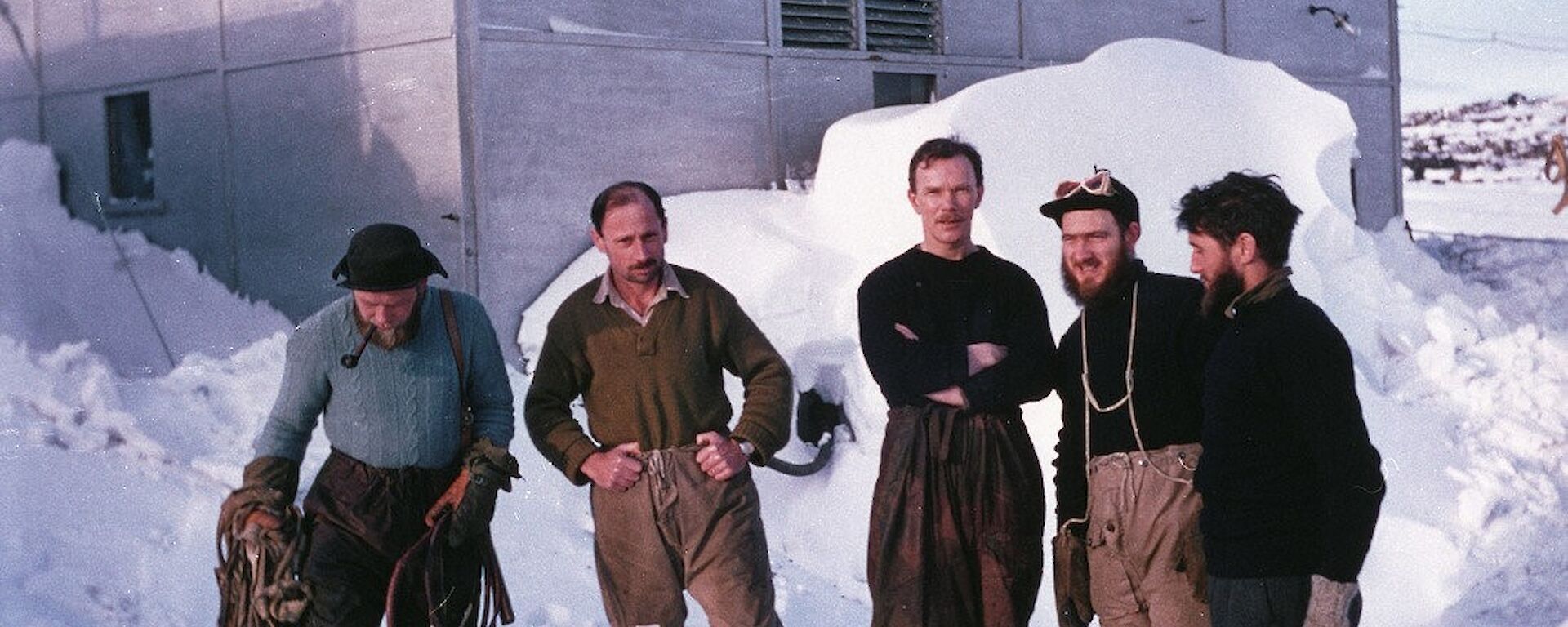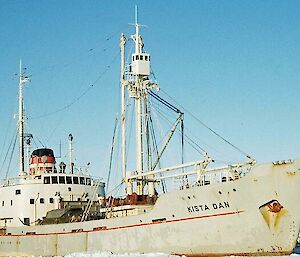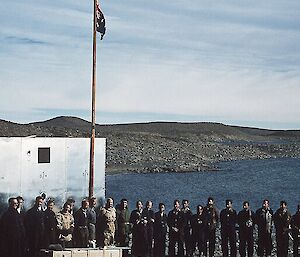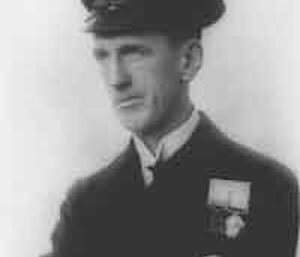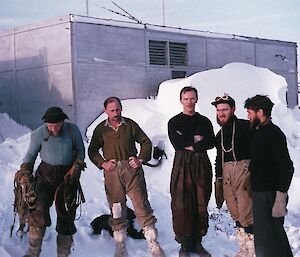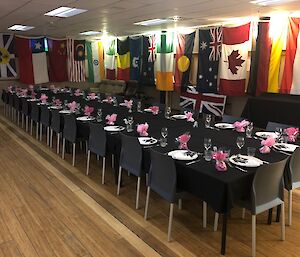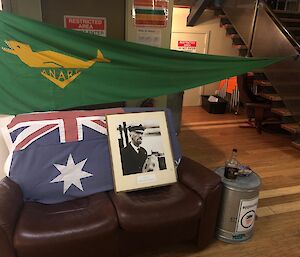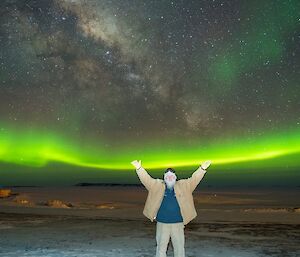This is the third and final instalment on some of the historic facts surrounding Davis station. The previous instalment introduced Dr Phillip Law and his wife Nell, the first Australian female in Antarctica, and their positive and deep involvement in ANARE and other related associations. It also introduced Sir Hubert Wilkins, explorer and aviator, who ensured Sir Douglas Mawson’s claim of the area for Australia was not sabotaged by the American Lincoln Ellsworth on their trip to the area in 1938.
This instalment will highlight how Davis came to be 'Davis station' as we know and love it today. With Mawson station established by 23 February 1954, Phillip Law was anxious to use the rest of his charter time with the ship Kista Dan to explore the Antarctic coastline to the east, and try and locate sites for further Australian stations. Law was particularly keen to get to the Vestfold Hills, a huge area of rocky terrain on the north side of the Sørsdal Glacier that remained remarkably free from snow in the summer. This 412 square kilometre expanse of low rocky hills and spectacular fjords had been discovered, and a landing achieved, by the Norwegian whaling captain Klarius Mikkelsen in 1935. Lincoln Ellsworth landed next in 1939 and the area was extensively photographed from the air by the United States’ Operation High Jump in 1946–47. Still, Law wanted to see it for himself.
Although later known as ‘the riviera of the south’ because of the amount of sunshine and settled weather there, it was cloudy, gloomy and threatening to snow when Law and four companions moored the Kista Dan's boat to some fast ice, and set foot on the mainland on 3 March 1954. So on that day, Phillip Law, Peter Shaw, John Hansen, Arthur Gwynn and R. Thompson made the first ANARE landing in the Vestfold Hills.
Conscious of Law’s determination to stake Australia’s claims in Antarctica at every opportunity, his deputy leader Dick Thompson had prepared an Australian flag lashed to a short pole:
‘We struggled ashore, built a cairn out of rocks, and planted the flag on its pole, while Phil took our picture. Then I took pictures of him with the flag, and a cine film of the three of them waving their caps like a trio of scat singers.’
Later, on 12 January 1956, members of the Soviet Antarctic Expedition landed on the Ingrid Christensen coast, in preparation for the International Geophysical Year (1957–58). The Soviets did not stay for long but even today the Russian presence is betrayed by some distinctively Russian names on the map (Lakes Lebed, Zvezda and Druzhby among them). They later established their base at Mirny Station, some 350 kms to the east of Davis, and would eventually build Progress station in 1989 approximately 120kms to the southwest of Davis.
As Phillip Law recalled during a short visit to Davis on 11 January 1998, it was felt that if Australia did not establish a base in the Vestfold Hills the Russians would, and so in 1955 the Australian Government announced that a new station would be established in the Vestfold Hills.
Phillip Law became the first director of the Australian Antarctic Division and used Hubert Wilkins' information to work out a location for a new Australian Antarctic station. In January 1957, after a few years of planning, Phillip Law led a voyage to the area and attempted to locate a suitable site for Davis station. This proved difficult due to a lack of good ship anchorages and a scarcity of fresh water sources. The Vestfold Hills in summer was more reminiscent of a chunk of the Simpson Desert transplanted to Antarctica. In addition to finding a location where the ship could get reasonably close to the coast, Law was dismayed to find that the snow banks he hoped could provide water for the new station through the summer had all melted.
On 12 January, Law was about to give up when he found a prominsing looking, small, black sandy beach leading to a flat terrace and unloading began. Only five men would winter there, with no doctor. However it was hoped that a Beaver aircraft from Mawson could fly in and evacuate a patient in the event of a medical emergency. Unloading began immediately and, on 13 January 1957, a small ceremony was held to officially open the new station. It was named Davis "to honour Captain John King Davis a famous Antarctic navigator and captain . . . at present . . . living in Melbourne, a member of the ANARE planning committee". Captain Davis had been the master of the ships Aurora [1911–14] and Discovery [1929–31] which had been used by Douglas Mawson on his expeditions.
After the ceremony, unloading recommenced and continued until 20 January when the Kista Dan sailed. The Kista Dan made a return visit to Davis later dropping off dogs and one more expeditioner.
Bob Dingle, Alan Hawker, Nils Lied, Bill Lucas and Bruce Stinear made up the first party to winter in the Vestfold Hills. Each of them have a landmark names after them.
Names are in order of the banner photo above: -
- Nils Lied – Lied Bluff
- Bruce Stinear – Lake Stinear
- Bob Dingle – Dingle Lake
- Alan Hawker – Hawker Island
- Bill Lucas – Lucas Island
Expeditioners spent the first two years learning about the Vestfold Hills and developing essential station services. The first party to winter in the Vestfold Hills was not completely isolated. Auster aircraft flew between Mawson and Davis several times to exchange personnel and supplies. Davis was temporarily closed on 25 January 1965 in order to make resources available for the rebuilding of Casey station. It was reopened on 15 February 1969 and has been continuously occupied since that time.
Every year all four Australian stations will dress up their respective messes, usually draped in flags of the nations that have a presence on the continent. Traditionally this is done at midwinter and Christmas in recognition of those on the continent seperated from family and friends. This season at Davis was no different. We dressed up the mess and set the tables for the 25 of us, the 74th Davis ANARE, who are wintering over. A sumptuous meal was enjoyed by all, and during the course of the evening, toasts were made in recognition of expeditioners (past and present), family and friends. And we even had the pleasure of Captain Davis joining us, in photo form at least.
As stated in the first instalment, the history of Davis station continues to intrigue me every time I come here and I always learn a little more about the station and the Vestfold Hills.
We certainly owe a lot to those who came before us, especially Dr Phillip Law. The excitement he and the many others experienced undertaking new adventures, enduring many hardships with lives lost and lives saved. Such adventures and all in the name of allowing Australia to perform its outstanding record in Antarctic research.
It will be a difficult decision the day I call it quits coming to Davis station: 'It's in your veins for life'.
But for now, I'll make the most of my time here.
Mick Eccles
Senior Weather Observer - Bureau of Metereology

